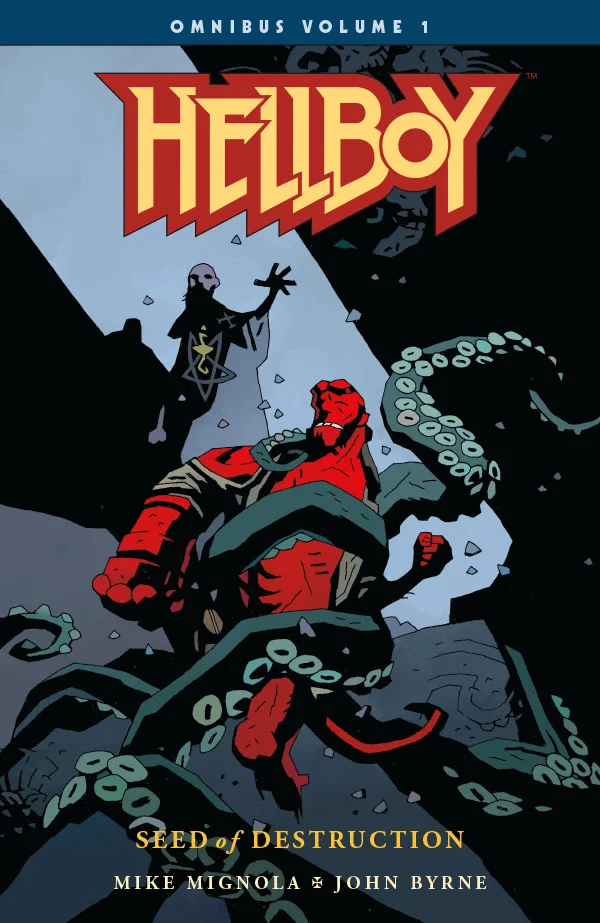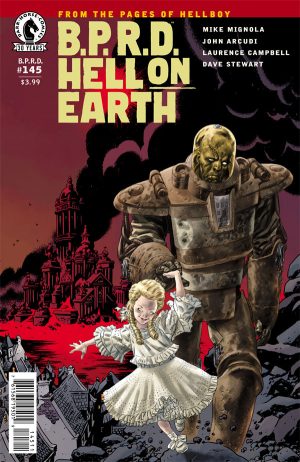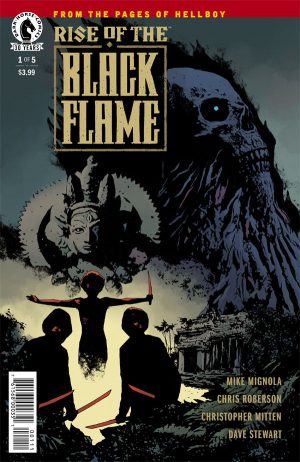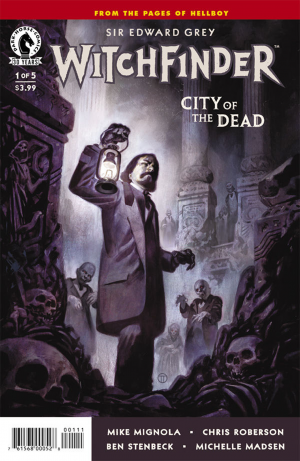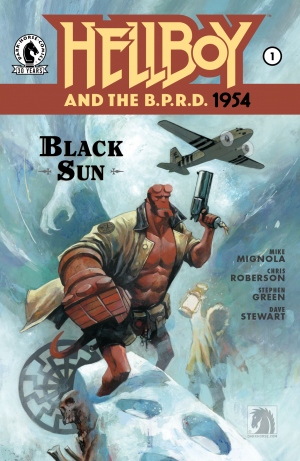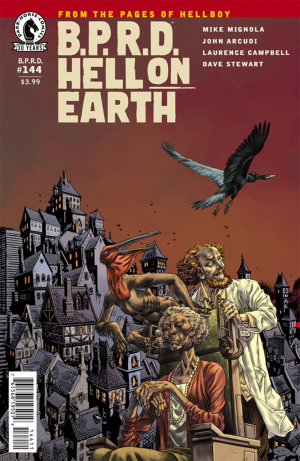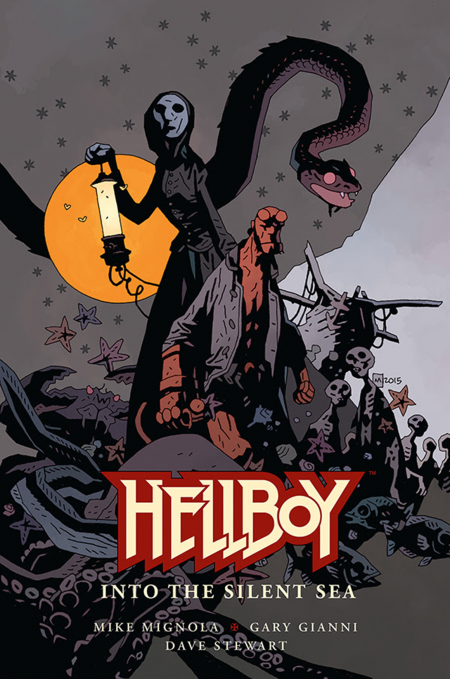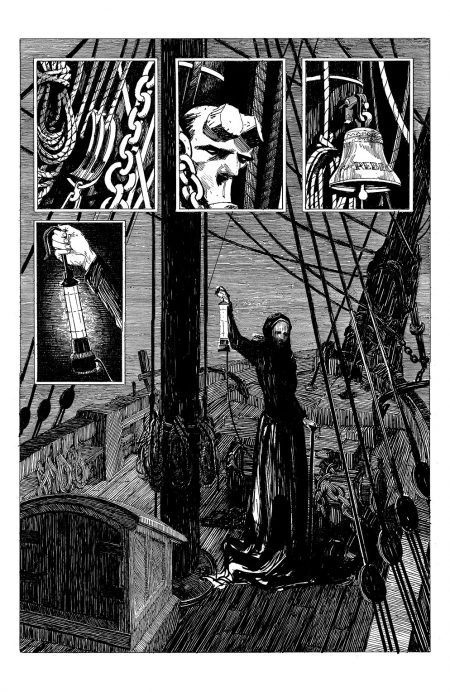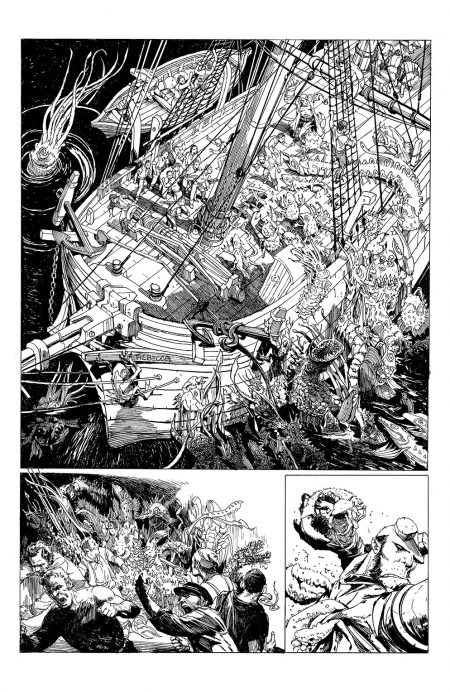Hellboy: Seed of Destruction was the comic book that got me into comic books.
Sure, I grew up on the Batman, Spider-man and Justice League cartoons, but like most kids, they never made me pick up a single issue. I saw comic book movies, even the Hellboy one, and remained ambivalent. No one around me read comics and without any comic book stores to visit, there was just never a reason to jump in.
But then I was in high school and it was one in the morning. I was flipping through TV channels trying to find anything to watch when I found the Hellboy animated movie Sword of Storms. This straight-to-video, cheap-looking cartoon is where Hellboy gets stuck with a magic sword and is sent into a strange alternate dimension filled with Japanese folkloric creatures. I can’t tell you if that movie was good but it set a fire in my brain—this juxtaposition of the weirdness of folklore with a sarcastic and hard-hitting demon protagonist showed me a type of storytelling I never knew existed. I immediately got on Amazon, bought the first three trades, and read them in a single night. I was all in.
Hellboy was the comic that introduced me to Alan Moore, whose books introduced me to Neil Gaiman, Grant Morrison, and Warren Ellis. My love for comic books traces back to this series and, to be honest, this is the first Hellboy book I’ve read in six years.
Hellboy and BPRD: 1953 is another short story collection that takes place during Hellboy’s earliest days working for the Bureau of Paranormal Research and Defense. The stories told here range from investigating a severed hand haunting an old British estate to a story from Hellboy’s father figure, Trevor Bruttenholm, about how he lost a friend to a Scottish water spirit when he was young.
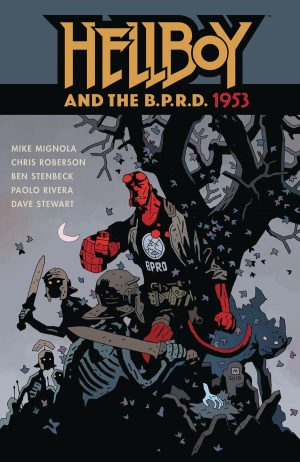 If you’ve ever read a Hellboy short story collection before, you should know whether you’ll like this book. If you’ve never read a Hellboy book at all, please go buy Seed of Destruction right now and start there.
If you’ve ever read a Hellboy short story collection before, you should know whether you’ll like this book. If you’ve never read a Hellboy book at all, please go buy Seed of Destruction right now and start there.
I stopped being able to keep up with the series when I left for college and now that I’ve come back, it’s a lot like coming home. The stories feel shorter and smaller paced than they used. The art looks a little different. Hellboy’s always been a series that starts with an eerie ghost story and builds to a fist fight but now those fights seem like they’re coming on a little too quickly.
The last third of the collection covers a story about Hellboy investigating and stopping a giant, mutated dog from harassing a quiet Californian suburb. The series has always played with its pulp science fiction elements, but here, more than ever, felt like a genuine formula shake-up. The mystery builds slower and leaned harder into the science fiction stories of the 1950's like Them! than I expected. My first reaction was to be put-off. This wasn’t the type of story I remembered or wanted. What was I supposed to do with this?
The rhythm of this book as a whole felt different, never quite matching up to the Mike Mignola stories that I grew up on and loved. Yet it still worked. I still found myself grinning when Professor Bruttenholm talked down an army of skeleton centurions or tilting my head at the strange and water-bloated horse face of a Scottish kelpie ready to drown Trevor’s friend in the lake. What worked in the previous Hellboy story collections works here even if it’s working slightly differently.
It was Mike Mignola’s stories that made me fall in love with folklore and that’s still here with great effect. The folklore of our ancestors, all those stories of ghosts and fairies and kelpie, were to make sense of the unknown, to give that darkness in the forest definition and meaning. But when we encounter them in this series, it’s not just a reminder that those unknowns are still present but that we live in places with history—that they have pasts, with people and with nightmares. Yet Hellboy has never been a series content with letting that history lie but rather about the ways we can break their cycles. In most folkloric stories, the beasts and ghosts can only ever be sated—to disappear and reappear, haunting a region in perpetuity. But in these stories, Hellboy will be sure to change that and beat the crap out of those monsters until they never show their faces around here again.
At first I was put-off by the final story in the collection, “Beyond the Fences,” because the subject matter was too much science fiction when I wanted folklore. Yet the more I thought about it, the more I realized that Mignola was leaning into a type of distinctly American folklore. Not Bigfoot or the chupacabra but the dropping of the Atom Bomb. After all, folklore has never been about whether a subject had a basis in history as much it is about a reaction to history and to the world, few things in America’s history have generated more fantasy than the nuclear bomb. Whether it was the fantasies of an apocalyptic wasteland or the horrific creatures conjured up by radiation, people across the world took the reality of the nuke and crafted fantasy in order to process this new horror. Now it's just Hellboy’s turn to punch it out.
So even if the line work looks slightly different or the faces look to have a little too much detail, when you see the crumbling stone fences and the thick, foggy forest trees on the page, you know you’re still reading a Hellboy story and you know that all sorts of spirits and folklore beasts are hiding just out of view.
[su_box title="Score: 4/5" style="glass" box_color="#8955ab" radius="6"]
Hellboy and the B.P.R.D.: 1953
Writers: Mike Mignola, Chris Roberson
Artists: Paolo Rivera, Joe Rivera, Ben Stenbeck, Michael Walsh
Publisher: Dark Horse Comics
Price: $19.99
Format: TPB; Print/Digital
[/su_box]






